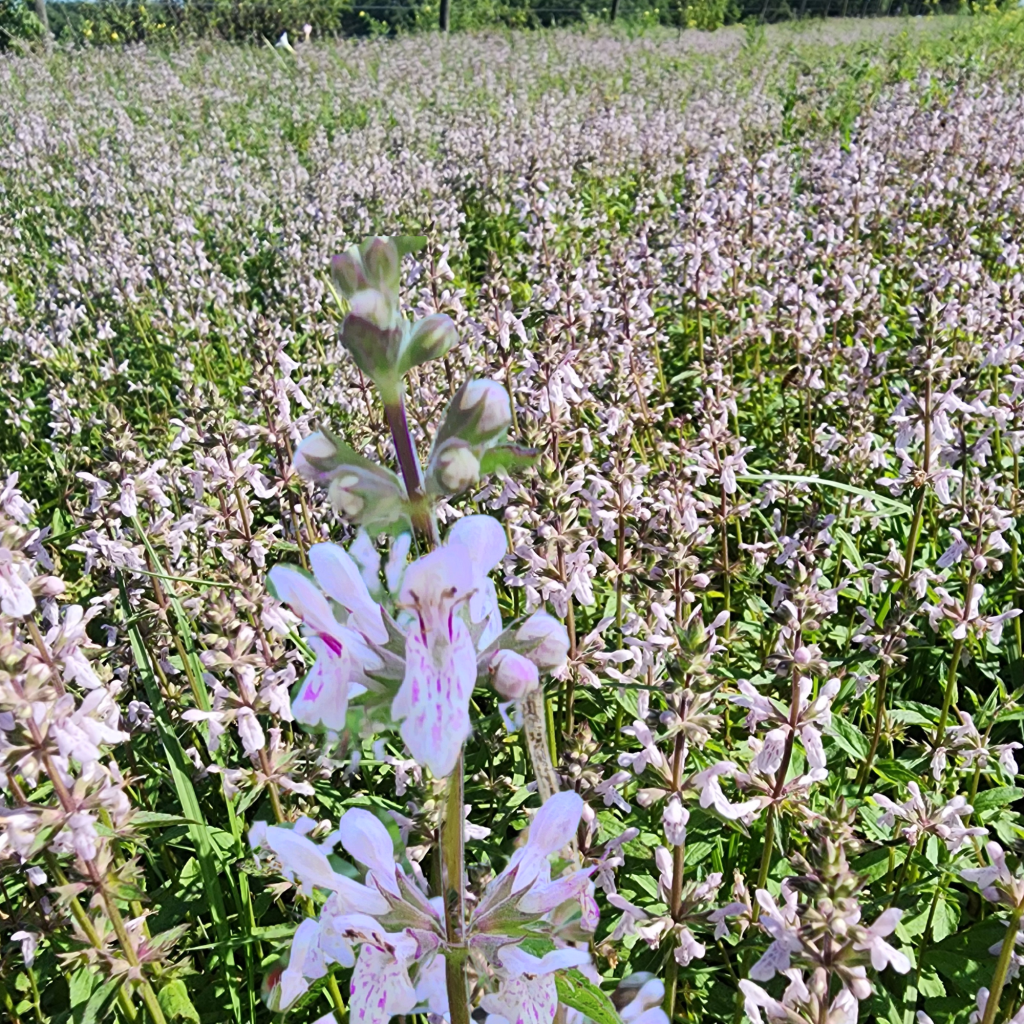A handful of the “lawn ornaments” that will be featured in this blog series. Top row (left to right): sunshine powderpuff, perennial peanut, frogfruit, and daisy fleabane. Bottom row (left to right): manyflower pennywort, bay lobelia, Florida snow, and blue-eyed grass.
Welcome to our Lawn Ornament blog series, where we explore the plethora of micro-plants that can help create a biodiverse, predominantly green, yet also delightfully colorful lawn that requires much less maintenance than a traditional grass lawn.
Many homeowners find it difficult and costly to maintain a “traditional” lawn, one largely dominated by a single grass cultivar. Embracing a biodiverse landscape can ease the frustration and save money, with the added bonus of providing ecological benefits. This “Lawn Ornament” series will provide a road map to that goal. Along the way, we’ll showcase volunteer “weeds” and commercially available ground covers that can improve upon the biodiversity of our lawns. We will also offer you tips and techniques to adopt and embrace this biodiverse approach. Breaking free from tradition, we can transform yards and neighborhoods to vibrant, beautiful mixed-mowable ecosystems.
Make sure to check out the Starter Guide: Embracing Lawn Ornaments: A Starter Guide
This plant is one that peaks in spring and is a prime example of the importance of No Mow March.
Florida Betony: A Unique Addition to Your Lawn Ornament Collection

Welcome back to the Lawn Ornament blog series! Today, we’re digging up information about Florida Betony (Stachys floridana), also known as Florida Hedgenettle or Rattlesnake weed. This captivating wildflower isn’t just a beautiful addition to your landscape as a Lawn Ornament; it’s also a choice edible with a fascinating history and seasonal charm. Just know if you add this plant into your landscape, it is considered impossible to get rid of and quickly spreads, so think hard before embracing this truly wild wildflower.
An Edible Delight
Part of the mint family, the Florida Betony offers an array of edible parts, making it a potential culinary gem waiting to be explored. Historically, both its tender new greens and dried leaves have been savored in various dishes or brewed into fragrant teas respectively. But the real star of the show is its root, resembling a rattlesnake’s tail and boasting a crunchy, delicious taste, especially when harvested in the spring.
You might be familiar with its cousin, Stachys affinis, commonly known as Chinese Artichoke or Crosne, a sought-after delicacy in gourmet restaurants. In Europe and New York fine dining scenes, Crosne can fetch up to $30 a pound. Our local foragers consider out subtropical version, the Florida Betony, on par, if not superior, to its northern counterpart. Just remember the golden rule: always ensure proper identification before consuming any wild plant, and exercise extreme caution when harvesting from areas that might be contaminated, such as roadside or lawn environments. For safe consumption as an edible, it’s best to buy the plant and cultivate it in a garden bed or pot.
Springtime Spectacle

Thriving in slightly moist, well-drained areas with ample sunlight, the Florida Betony is a sight to behold during spring. Along roadsides, it spreads through its extensive tuber network, creating breathtaking patches of flowers that attract native bees and butterflies. From delicate whites to vibrant pinks and purples, its blossoms paint a picturesque scene from spring until early summer.
Seasonal Sprouts
The Florida Betony’s charm lies in its seasonal nature. Spring heralds the prime time for harvesting its crunchy white roots and enjoying its vibrant blooms. However, as summer’s heat sets in, the plant enters a dormancy phase, retracting its leaves and waiting patiently underground until conditions are ripe again. This seasonal cycle makes it an ideal candidate for mixed-mowable landscapes, blending seamlessly with other lawn ornaments.
Will You Embrace the Florida Betony?
As we conclude our exploration of the Florida Betony, we invite you to ponder whether this unique wildflower deserves a place in your landscape as a lawn ornament. Have you encountered this fascinating plant before? Are you tempted to add its vibrant blooms and edible delights to your garden? Share your thoughts and experiences with us – we’d love to hear from you!
Until next time, happy gardening and may your lawn bloom with the beauty of nature’s ornaments!
Resources
- UF/IFAS on Florida Betony: https://edis.ifas.ufl.edu/publication/EP597
- Florida Native Plant Society on Florida Betony: https://www.fnps.org/plant/stachys-floridana
- Florida Wildflower Foundation on Florida Betony: https://www.flawildflowers.org/flower-friday-stachys-floridana/
- North Carolina State Extension on Florida Betony: https://plants.ces.ncsu.edu/plants/stachys-floridana/
- USF Atlas of Florida Plants: https://florida.plantatlas.usf.edu/plant.aspx?id=650
During the preparation of this work, the author used ChatGPT to help build the blog post. After using this tool/service, the author reviewed and edited the content, and takes full responsibility for the content of the publication.
 4
4

